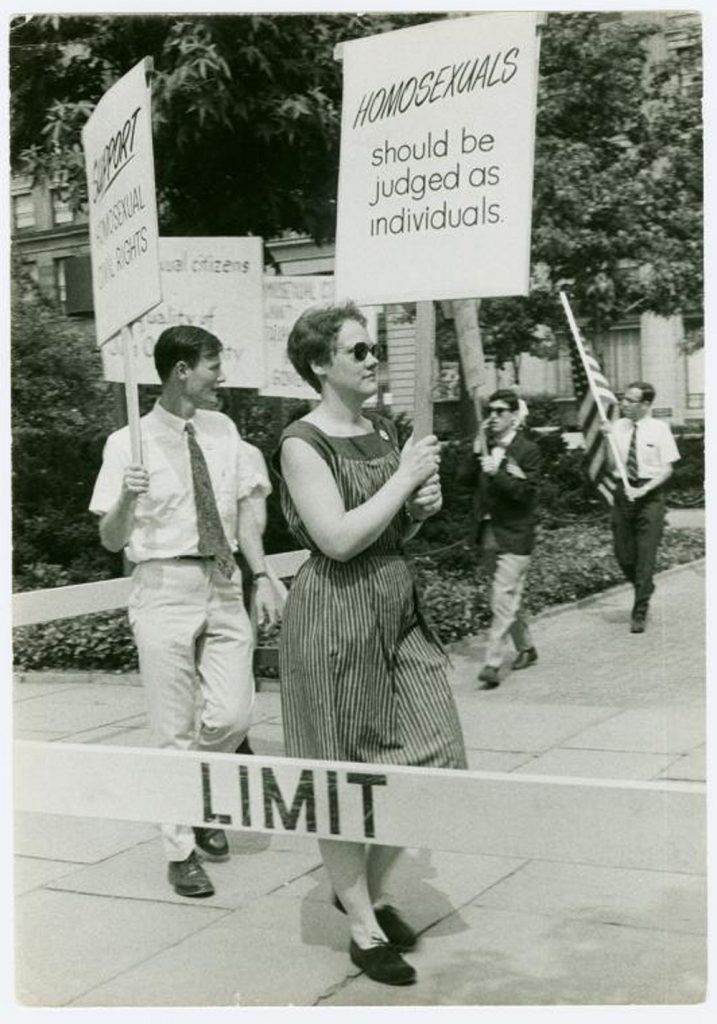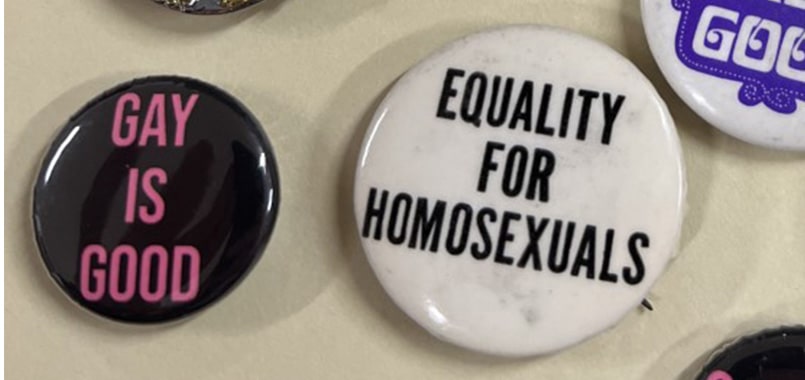About the Project

Throughout Delaware history, stories of the day-to-day experiences, challenges, love stories, and courageous advocacy of the LGBTQ+ community have often been overlooked. “LGBTQ+ History of Delaware: We Have Always Been Here” is a year-long effort to bring those stories to light through historical research and interviews with community members.
The project, launched in 2022, is supported by the Delaware Department of State and the Division of Historical and Cultural Affairs, which supports the elimination of racial injustice, racism, discrimination, and exclusionary history. Through this project, researchers refuse to shrink from the pain of our shared history and welcome the difficult conversations that come from interpreting a combination of uncomfortable truths, differing views, and difficult narratives.
The information included here is not exclusive to state collections. What is presented has only been made possible by the cooperation of LGBTQ+ organizations and other cultural institutions in Delaware and neighboring states, as well as by many individuals.
The Team

Megan Hutchins
HCA Engagement and Collections Manager, Project Lead

Carolanne Deal
Researcher and Copywriter

Maddy Goss (Lauria)
Editor and Copywriter
The project is spearheaded by Megan Hutchins, project lead and the Division’s engagement and collections manager, with research efforts led by Researcher Carolanne Deal, both of whom identify as members of the queer community. Carolanne Deal handled the vast majority of the research, conducting Oral Histories with members of the LGBTQ+ community and visiting local and regional archives. Longtime LGBTQ+ ally Maddy Goss (Lauria) helped with editing, design, and writing. The team embarked on this effort to memorialize the stories of the people, places, and things most important to Delaware’s queer community because, for so long, those identities were considered illegal and were constantly under threat. They hope by capturing the diverse stories throughout history, more people are represented in Delaware’s historical narratives.

Karen Katz
Graphic Designer
My name is Karen Katz, and I serve as a web and graphic designer at the Government Information Center (GIC). It was a privilege to collaborate closely with the talented researchers and writers at HCA to develop a vital website dedicated to specifically LGBTQ+ history in Delaware. My primary goal was to craft an easily navigable digital platform spotlighting the often overlooked narratives of LGBTQ+ individuals. My overarching goal was to allow the stories and stunning photographs to speak for themselves. The colors, including what we refer to as the “Pride Line” in the logo and site design, serve as supportive elements to elevate these significant historical moments. I invite you to explore further below on the page to understand the rationale behind the chosen colors and fonts. The rainbow colors of the Pride flag carry profound meaning for the LGBTQ+ community, and I aimed to reflect this symbolism throughout the site.
The Design
The pastel versions of red, yellow, teal, lavender and purple seen throughout this project website were selected as a customized tribute to the rainbow colors often seen on Pride flags and representing the colorful, multifaceted LGBTQ+ community.
Lavender and purple: Various shades of purple, particularly lavender and violet, have been seen as symbolic among the LGBTQ+ community for centuries, particularly for people who identify as lesbians. While the colors have also experienced negative connotations, like the “Lavender Scare” of the 1950s that saw the American government spreading hateful disinformation about queer people (much like the anti-Communist propaganda of the “Red Scare”), members of the LGBTQ+ community use and wear these colors with pride. In this project, these colors are used to represent the Delawareans and documents highlighted on the site.

Yellow and teal: Represent Delaware as a new and brighter take on the official state colors of colonial blue and buff. These colors are used to represent the places and authors highlighted in this project.

Pinkish red: This color brings it all together and will be used for the historical artists presented on the site.

Bolded Names: Throughout the pages on this website, we have displayed the names of known queer people in bold to further celebrate their stories and contributions to history.
Font: In American queer history, newsletters, posters, and other memorabilia played a critical role in connecting the community. The choice of fonts for this website incorporates that theme, prioritized accessibility for all users of all abilities, and attempts to connect to what can be found throughout the Delaware Division of Historical and Cultural Affairs’ web pages.

Special Thanks
This project would not have been possible without the significant guidance, input, and dedication of time, knowledge, and resources from many individuals and organizations, including the following:
- AIDS Delaware
- Murray Archibald
- CAMP Rehoboth
- The Delaware Department of State
- The Delaware Division of Historical and Cultural Affairs
- The Delaware Government Information Center
- Ivo Dominguez Jr.
- Ryan Grover
- Wayne Hodge
- Fay Jacobs
- Willie Allen Lewis
- New York Public Library
- Karen Peterson
- Joel Rudnick
- University of Delaware Archives and Records Management
- University of Delaware Special Collections
- James Welch


